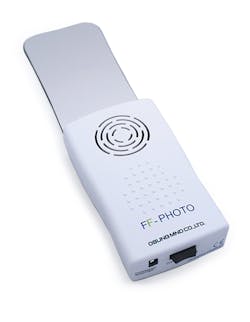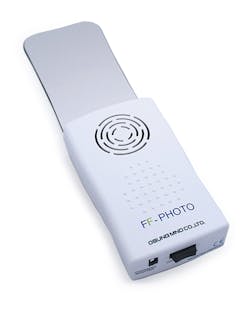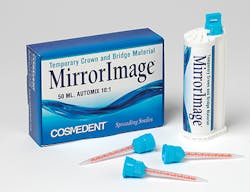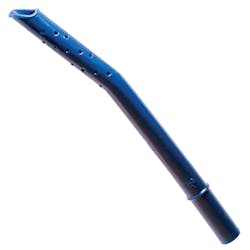Pearls For Your Practice
Fog-Free Photo Kit
From Innovative Dental Design
An intraoral camera is an invaluable tool for many dentists. I am not one of them. I hate intraoral cameras with a passion. They are expensive and finicky, and the images they capture can be considered subpar, at best. There is no excuse not to use a digital single-lens reflex (DSLR) camera for dental photography. For the same price or less than most brand-name intraoral cameras, plus a little training, your entire team can become proficient in dental photography and produce high-quality images.
In order to use a DSLR for intraoral photography, you will need a set of intraoral mirrors. This really freaks out the intraoral camera lovers! Sure, mirrors have their eccentricities, but with a few little tricks, they can be easily mastered. One common complaint is that mirrors fog up once they're inside a patient's mouth, and this is absolutely true. A room-temperature intraoral mirror will fog as soon as the patient breathes, but if the mirror is heated, the fogging diminishes. Leave it to a creative orthodontist to figure out a way to keep warm air circulating over mirrors for dental photography.
The Fog-Free Photo Kit from Innovative Dental Design includes a small motor that blows warm air over the surface of the mirror to prevent fogging. The motor is rechargeable, and it makes a nice handle for holding and positioning the mirror. Also, the mirrors - occlusal, buccal, and pedo - are easy to switch out.
Pros: Easy-to-use without assistance; inexpensive; multiple mirror options
Cons: Only applicable for DSLR setups
Final Thoughts: As part of every new-patient experience in my practice, a set of DSLR photographs are taken. Generally, one of my dental hygienists takes the photos after taking the radiographs. It decreases the time needed for taking photos, yet it increases the quality of the images. Both of my hygienists love this device, and when I use it, I wonder how people who don't have it are able to get decent photos. The Fog-Free Photo Kit from Innovative Dental Design is a three-run homerun!
Joshua Austin, DDS, FAGD,
graduated from the University of Texas Health Science Center Dental School in San Antonio. After associating for several years, he opened a solo general practice in a suburban area of San Antonio during October of 2009. Dr. Austin is involved in all levels of organized dentistry and can be reached at [email protected].
Cosmedent
MirrorImage System
Few things cause me more stress as a restorative dentist than fabricating esthetic and functional anterior provisionals. In my practice and - I would guess - in most other average practices, dental assistants most commonly fabricate posterior provisionals. This may even be the case for anterior provisionals in many practices. In my practice, I like to be the one to fabricate both single- and multi-unit provisionals for anterior teeth. Shade matching, contouring, marginal adaptation, and strength are all extremely important for provisionals, so having a system of products for the fabrication of high-quality anterior provisionals would be a great thing ...
Cosmedent has answered the bell! MirrorImage is its new bis-acryl GMA provisional crown material, and the company has developed complementary products to accompany it. It comes in shades A1, A2, A3, B1, and bleach. The MirrorImage material handles and trims well, with readable margins. Some bis-acryl materials tend to chip when fine margins are trimmed, but I did not notice that at all with MirrorImage. It polished well and was esthetic - a trait that almost all Cosmedent products share.
Cosmedent's system of complementary products includes Adhere, a nice non-eugenol provisional cement, and more notably, Connect, which is a clear provisional cement that is great for anterior provisionals. Oftentimes, the stark white of average provisional cements shows through in provisionals, creating a shade issue. Connect helps with these situations and would also be a good choice of cement to pair with MirrorImage for veneer provisionals.
Another Cosmedent product to pair with MirrorImage is Adjust, a flowable bis-acryl GMA repair material that bonds to MirrorImage. Many clinicians use flowable composite to patch provisionals, but flowable composite and bis-acryl GMA materials aren't really all that compatible. Adjust was made to work with MirrorImage to allow for a better bond.
Lastly, Gloss is a glaze for provisionals. It's thin, coats well, and is easily light-cured. It adds a very nice glaze to the MirrorImage. Obviously, this would be mainly for anterior provisionals. This system is well-thought-out and should address most provisional needs for restorative dentists.
Pros: Flows and trims well; is esthetic, durable, and rigid; allows for multiple cement options; includes gloss for a nice final touch and great esthetic result
Cons: Requires a 10:1 gun that some docs might need to order; is slightly more expensive per gram than competing crown materials
Final Thoughts: MirrorImage, Adhere, Connect, Adjust, and Gloss are all excellent components of a solid esthetic provisional system, although cost could be a consideration for some clinicians. The handling, trimming, and polishing, along with multiple cementation and repair options, make Cosmedent's MirrorImage System a solid double in the gap!
Joshua Austin, DDS, FAGD
Multi-Axis Spiral Suction (M.A.S.S.) Tip
from Ghost Manufacturing
Joshua Austin, DDS, FAGD
High-volume evacuation (HVE) is one of those things that you never think about unless your vacuum pump is broken since the tips have been basically the same for decades. Once upon a time, someone made a tip with a hole at the end. Then, someone else made some little caps with mesh to attach to the end of the tip to prevent the suction of big chunks or crowns. Otherwise, HVE tips have always been the same ... and no one ever thought any differently.
All of that changed when the good people at Ghost Manufacturing debuted the Multi-Axis Spiral Suction (M.A.S.S.) Tip, which seems to be a smarter approach to the HVE tip. The first noticeable difference is that it isn't perfectly straight. It's got a slight angle to the distal one-third that can make retraction a little easier for your assistant. That same distal one-third has multiple small vents in it. These vents seem to help reduce the noise produced by the suction, and they prevent the patient's mucosa from being sucked into the tip. The end has a small plastic roll, which also helps to protect the tissue. Due to the vents and the rolled edge, the manufacturer suggests that the M.A.S.S. Tip can be used as a saliva ejector, as well. My experience? When patients closed on it, there was still a pretty strong suction that sucked in their lips. I am not sure that you could fully be rid of the saliva ejector, but if you had no other choice, it would certainly be better to use the M.A.S.S. Tip than a standard HVE tip for saliva ejection.
Pros: Allows for easier retraction because of the angle (great when you have to work without an assistant); runs more quietly than regular HVE tips; doesn't grab the mucosa as frequently or as aggressively as regular HVE tips
Cons: Costs more than the cheapest nonvented house brand of HVE tips (but is consistent in price with higher-end vented HVE tips); doesn't necessarily eliminate the need for a saliva ejector; has some trouble suctioning big pieces of debris (which could be an advantage or disadvantage, depending on whether you are cutting out a big chunk of alloy or trying to bond an onlay, for example)
Final Thoughts: My assistant really enjoyed the M.A.S.S. Tip. She found retracting the cheek to be easier with the M.A.S.S. Tip, as opposed to a regular HVE tip. I use an Isolite, so it takes care of most of my retraction if I work alone. If you don't have an Isolite and find that you have to work without an assistant from time to time, the M.A.S.S. Tip might be a real benefit to you. If you are already ordering one of the nicer HVE tips, it probably won't cost you any more money to give the M.A.S.S. Tip a try. It is certainly different from the standard HVE tips that we have been using for years. While I didn't think that I had any issues with the old type of HVE tips, I definitely see some improvements with the M.A.S.S. I think they are worth a try. Line-drive single up the middle!



